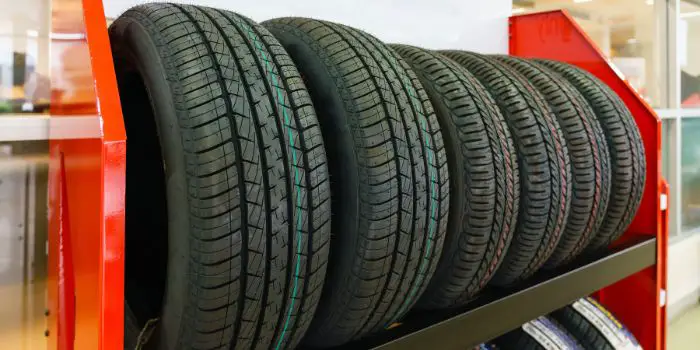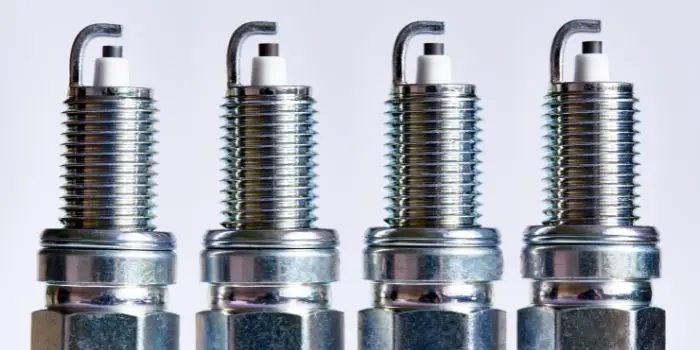
When most people think of car fuses, the first thing that comes to mind is the little glass tubes found in most vehicles.
While those are still used today, there are a variety of different types and sizes of fuses available for cars.
In this blog post, we’ll explore the different types and sizes of fuses as well as their uses. So, whether you’re a DIYer or just curious about car fuses, read on!
Types of Car Fuses
Car fuses are used to protect your vehicle’s electrical system from overloading. They do this by breaking the circuit if too much current flows through it.
This prevents damage to the wiring and other components in your car’s electrical system.
Fuses are commonly used for a variety of purposes, including to protect headlights and taillights, stereo equipment, power windows, interior lights, and other components.
They can also be used to prevent battery drain, as well as protect sensitive electronics such as ECUs.
In general, there are two main types of car fuses: blade fuses and cartridge fuses.
But in older cars, there are also a few other types that can be found. These include Lucas Fuses, Glass Tube Type Fuses, and Current limiting fuses.
1. Blade Fuses
Blade fuses are the most common type of fuse used in cars. They’re easy to use and come in a wide range of sizes.
Blade fuses have a plastic body with a metal prong on either end, which fits into sockets in your car’s wiring harness.
Some advantages of blade fuses include their affordability, ease of use, and wide range of available sizes.
They’re also less susceptible to vibration or movement than other types of fuses.
However, if you need a fuse with a high amperage rating, a blade fuse may not be the best option.
2. Cartridge Fuses
Cartridge fuses are less common than blade fuses, but they offer some advantages over their Blade counterparts.
Cartridge fuses have a cylindrical body with threaded ends, which screw into sockets in your car’s wiring harness.
Some advantages of cartridge fuses include their high amperage ratings, strong vibration resistance, and small size.
However, they can be more difficult to replace than blade fuses. They may also cost more than blade fuses.
Different Sizes
Both types of fuses mentioned above are available in a variety of sizes, which is determined by the amperage rating.
The amperage rating is the amount of current (measured in amps) that a fuse can safely carry.
Blade fuses are typically available in ratings from 5 amps to 30 amps, while cartridge fuses are available in ratings from 20 amps to 60 amps.

Mini Fuse vs. Micro Fuse
When it comes to car fuses, two of the most common types are mini fuses and micro fuses.
Both types are used to protect your vehicle’s electrical system from overloading, but they differ in terms of size and amperage rating. So, which type of fuse is right for your needs?
Micro fuses are typically smaller than mini fuses and are available in lower amperage ratings.
For example, a typical micro fuse may have an amperage rating of 10 amps or less, while a mini fuse may have an amperage rating of 15 amps or more.
Because they’re smaller and have lower amp ratings, micro fuses are often used in circuit applications that draw less power, such as interior lights or small electronics.
Mini fuses are typically larger than micro fuses and have higher amp ratings.
For example, a typical mini fuse may have an amperage rating of 20 amps or more, while a micro fuse may have an amperage rating of 10 amps or less.
Mini fuses are often used in circuit applications that draw more power, such as headlights or power windows.
When it comes to choosing between a mini fuse and a micro fuse, it’s important to select the fuse that has the appropriate amperage rating for the application.
Using a fuse with too low of an amperage rating can lead to overheating and damage to your vehicle’s electrical system, while using a fuse with too high of an amperage rating may result in inadequate protection against overloading.
So, when shopping for car fuses, be sure to carefully consider the size, amp rating, and other specifications of each type of fuse before making your selection.
What Do the Numbers on Fuses Mean?
The numbers on fuses refer to their amperage rating, or the maximum amount of current that they can safely carry.
Typically, higher numbers indicate fuses with a higher amp rating, which means that they are capable of handling more power and can be used in applications that draw more current.
Lower numbered fuses typically have lower amp ratings and are better suited for applications that draw less current.
For example, a 20 amp fuse would be used in an application that draws less current than a 30 amp fuse.
It’s important to choose the right fuse for your needs, as using a fuse with too high or too low an amperage rating can lead to problems.
Slow Blow Fuse vs. Fast Blow Fuse Difference
If you are wondering what the difference is between a slow-blow fuse and a fast-blow fuse, let me tell you that these are designed to react differently when they experience an overload.
Slow blow fuses, also called time-delay fuses, are designed to allow a small amount of current to flow through them for a short period of time before they begin to open up and break the circuit.
This allows them to handle brief surges in current without overheating, which makes them a good choice for protecting sensitive electronics or other circuit components that can be damaged by excessive current.
By contrast, fast-blow fuses are designed to immediately respond to an overcurrent situation by breaking the circuit quickly and completely.
This makes them a good choice for protecting against large surges of current, but it also means that they may be more likely to blow in applications where there are periodic spikes in current.
How to Identify What Type of Fuses Are in Your Car?
Identifying the correct type of fuse in your vehicle is essential for safety and proper electrical system operation, especially when adding accessories like dash cams or other electronic devices.
Automotive fuses protect your vehicle’s electrical circuits from overcurrent, and using the wrong type can cause damage or electrical hazards. Here’s how to accurately determine the fuse type in your car.
1. Inspect the Fuse Box and Fuses
The first and most direct method is to examine the fuse box itself. Most fuse boxes have labels or diagrams indicating the amperage rating (in amps) and type of each fuse. Fuse amperage is usually printed on the top of the fuse or molded into the plastic. Modern vehicles often use blade fuses, which are the standard since 1981. These come in several variations:
- Standard Blade Fuses (ATO/ATC): Flat, rectangular, with two metal prongs that plug into the fuse socket.
- MINI, MICRO2, MICRO3: Smaller versions used in compact or modern vehicles for tighter fuse boxes.
- Low-Profile MINI (LP-MINI): Even thinner versions, allowing for denser fuse arrangements.
- MAXI Fuses: Larger, higher-amperage fuses used for high-current circuits such as cooling fans or main battery feeds.
Inspecting the fuse itself allows you to read the amperage and size, confirming the correct replacement type.
2. Use the Fuse Diagram in the Owner’s Manual
Your car’s owner’s manual typically includes a detailed fuse diagram for each fuse box. This diagram identifies:
- The function of each fuse (e.g., headlights, horn, radio, ECU)
- The amperage rating
- The physical type of fuse installed
By referencing this diagram, you can match the fuse slot to the correct amperage and style, avoiding mismatched replacements.
3. Locate the Fuse Box
Most vehicles have one or more fuse boxes. Common locations include:
- Under the dashboard near the driver’s or passenger’s side
- In the engine compartment
- Near the trunk or cargo area in some SUVs and trucks
Consult the owner’s manual to find the exact locations. If unavailable, manufacturer websites or online forums often provide diagrams or photos showing fuse box placement.
4. Consult Manufacturer Resources or a Professional
Some car manufacturers provide online technical resources, including PDF guides or apps, to help identify fuse types. Additionally, automotive service centers or certified mechanics can quickly determine the appropriate fuse based on your vehicle’s model, year, and specific electrical system.
5. Safety Precautions
- Always turn off the engine and remove the key before inspecting or replacing fuses.
- Use a fuse puller or insulated tools to avoid short circuits.
- Replace fuses with the same amperage rating and type as specified. Never substitute a higher-amperage fuse, as it can cause serious electrical damage.
By following these steps, you can accurately identify and replace fuses, ensuring your vehicle’s electrical system remains safe and fully operational.
Why Vehicle’s Fuse Blows – Does A Blown Fuse Mean I Have a Problem in My Car?
A fuse blows when the electrical current exceeds its rated capacity. This can happen due to a short circuit, faulty wiring, damaged components, or an overloaded circuit.
Fuses act as a safety barrier to prevent damage to the vehicle’s electrical system, including wiring, modules, and accessories.
Sometimes, a surge from starting motors or high-current devices can temporarily blow a fuse.
Identifying the cause is crucial because repeated fuse failures usually indicate a deeper electrical problem that needs inspection.
A blown fuse does not necessarily mean you have a problem in your vehicle. A single blown fuse could be due to a temporary current surge or minor overload.
However, if fuses blow repeatedly, it is usually a sign of an underlying electrical issue, such as a short circuit, faulty wiring, or a malfunctioning component.
Ignoring repeated blown fuses can lead to more serious electrical problems, including damage to sensitive electronic modules.
Always inspect the circuit and replace the fuse with the correct type to maintain safe operation.
To safely replace a blown fuse, first turn off the vehicle and remove the key from the ignition.
Locate the correct fuse box using your owner’s manual or diagram, and identify the blown fuse by its melted or broken metal strip.
Use a fuse puller or insulated tool to remove it carefully. Replace it with a fuse of the exact same type and amperage.
Avoid forcing it into the slot. After replacement, test the circuit to ensure proper function.
Never use a higher-amp fuse, as this can cause electrical damage or fire hazards.
FAQs
Why are there so many types of automobile fuses?
Automotive fuses vary in type, size, and amperage to suit different circuits and space constraints. High-current circuits like cooling fans or battery feeds require MAXI fuses, while low-current circuits like interior lights use MINI or MICRO fuses.
Different designs also allow easier replacement and better fit in compact fuse boxes. Using the correct fuse type ensures proper protection, prevents electrical fires, and maintains reliable operation of all vehicle systems.
Choosing the wrong fuse can lead to blown fuses, component damage, or even severe safety hazards.
What type of automotive fuse do I need in my vehicles?
The correct fuse type and amperage for your car are specified in the owner’s manual or on the fuse box diagram. Most modern vehicles use blade fuses like standard ATO/ATC, MINI, MICRO2, MICRO3, or MAXI fuses, depending on the circuit and space available.
Choosing the right fuse ensures your electrical components, like lights, stereo, or dash cams, are properly protected.
Always replace a blown fuse with one that matches both the type and amperage rating exactly to avoid damage or electrical hazards.
How can I prevent fuses from blowing repeatedly in my car?
Repeated blown fuses usually indicate an underlying electrical problem. To prevent this, inspect the affected circuit for short circuits, damaged wiring, or faulty components.
Ensure any added accessories, like dash cams or stereos, are wired correctly and do not overload the circuit. Use the correct type and amperage of fuse for each application.
Regularly check your vehicle’s electrical system for corrosion, loose connections, or frayed wires.
Final Thoughts
Fuses are small but critical components that protect your vehicle’s electrical system from overcurrent and short circuits.
Understanding the different types—from standard blade fuses to MINI, MICRO, and MAXI fuses—along with their sizes and amperage ratings, ensures you replace them safely and correctly.
Always consult your owner’s manual or fuse box diagram before replacing a fuse, and never substitute a higher-amp fuse. If you are unsure, have a certified mechanic diagnose the circuit.
Proper fuse selection and maintenance not only keep your electronics and accessories safe but also prevent costly damage and electrical hazards. Knowing your fuses means safer, more reliable driving.

Based in Orem (Utah) John Paterson graduated from Utah Valley University and has begun writing in 2009. He has a large wealth of experience in writing articles related to cars, automotive repair, wheels, cleaning/maintenance, and much more. He has also written instructional articles in a similar niche for a few online publications as well. Currently, he works as a mechanic in his personal garage shop where he loves serving his countrymen from his heart.




